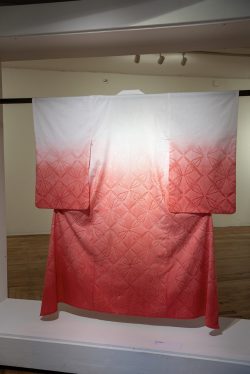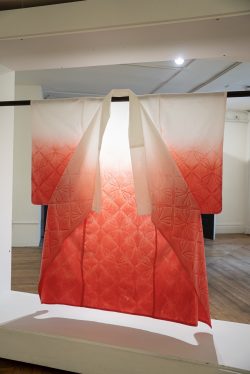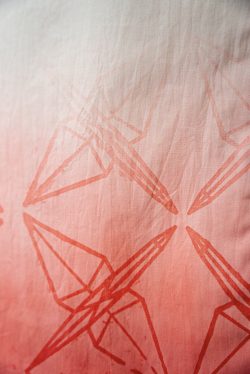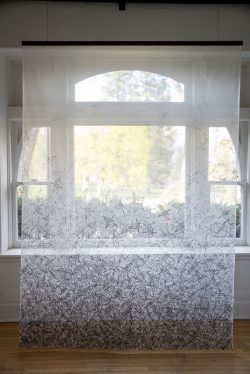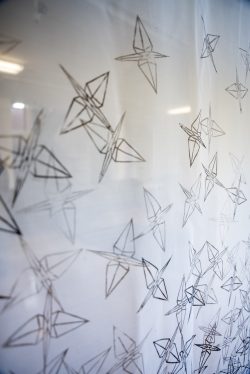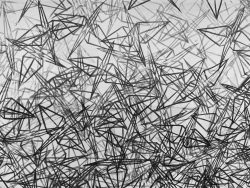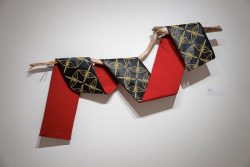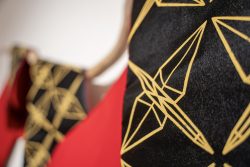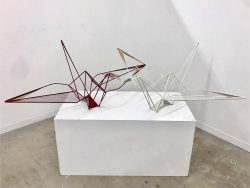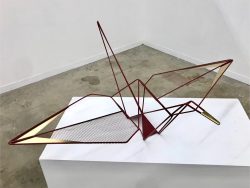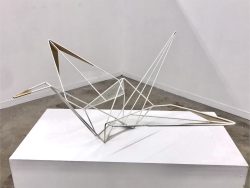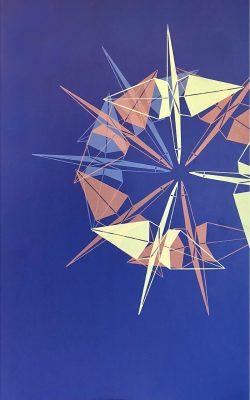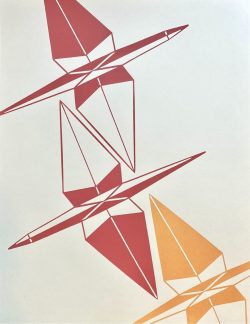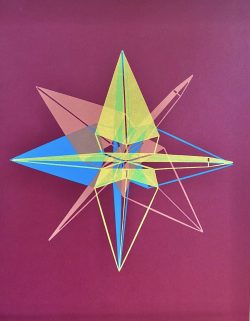Why paper cranes?
In Japanese tradition, folding one thousand paper cranes is believed to grant a wish. Sadako, a young Japanese girl suffering from leukemia after the bombing of Hiroshima, was desperate for that chance. Sadako folded over one thousand paper cranes from the confines of her hospital bed, wishing to heal, but unfortunately she passed at the age of twelve. Her resilience in the face of tragedy inspired many others, and a monument was dedicated to her and all of the other children who died because of the bombing. Paper cranes are now sent to this monument from all around the world carrying a universal wish: to have peace.
The concept of the paper crane has stuck with me through my experiences visiting Hiroshima and studying abroad in Nagasaki, and through stamping the form of a paper crane one thousand times onto textiles, I am expressing my own wish for peace. Through the tedium and repetition of my work, I am able to spend time reflecting on how, as an American, I feel a responsibility to share what I’ve learned from my travels and interactions with atomic bomb survivors to educate others about the true cost of nuclear war.
Even the simple act of folding a paper crane can encourage the pursuit of a better future.

